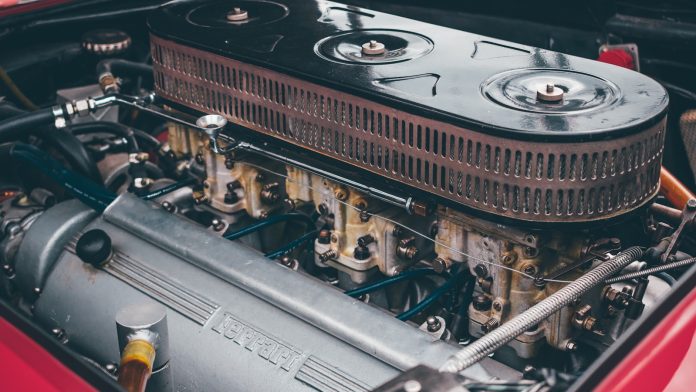Introduction
A cold air intake is a widely favored aftermarket modification designed to improve a vehicle’s performance. By allowing the engine to draw in cooler air from outside the hot engine bay, this system increases the amount of oxygen available for combustion. The result is a more efficient engine that can produce more power. For automotive enthusiasts and casual drivers alike, understanding how a cold air intake works and the benefits it provides can be the key to unlocking a vehicle’s full potential.
How Cold Air Intakes Improve Performance
The core principle behind a cold air intake is simple: colder air is denser than warm air. This means that, for a given volume, cold air contains more oxygen molecules than warm air. More oxygen in the combustion chamber allows for a more powerful explosion, which increases engine power. This process can lead to improved acceleration, better throttle response, and an overall increase in horsepower.
- Oxygen-Rich Air: The denser air entering the engine allows for a more complete combustion process. This not only boosts power but can also contribute to cleaner exhaust emissions.
- Improved Airflow: These systems are designed to reduce air resistance and turbulence within the intake tube. This streamlined airflow ensures that the engine receives a steady supply of oxygen-rich air, optimizing performance.
- Cooler Combustion Temperature: By lowering the temperature of the air entering the engine, a cold air intake can reduce the likelihood of engine knock, a condition caused by premature combustion due to high temperatures. This can help maintain engine health over the long term.
Key Components of a Cold Air Intake System
A system is composed of several critical components, each playing a vital role in its operation:
- Air Filter: The air filter is the first point of contact for the air entering the intake system. It removes dust, dirt, and other contaminants from the air, ensuring that only clean air reaches the engine. High-performance filters are often made from materials like cotton gauze or foam, which allow for greater airflow while still providing effective filtration.
- Intake Tube: This tube directs the filtered air from the air filter to the engine. It is typically designed with a smooth interior surface to minimize air resistance and may be made from materials such as aluminum, plastic, or carbon fiber to reduce weight and improve heat resistance.
- Heat Shield: To prevent the intake air from being heated by the engine, many cold air intake systems include a heat shield. This component helps to isolate the intake from the hot engine bay, ensuring that the air entering the system remains cool.
- Mounting Hardware: This includes the brackets, clamps, and screws that secure the cold air intake system to the vehicle. Proper installation is crucial for ensuring that the system functions correctly and remains stable during operation.
Advantages of Installing a Cold Air Intake
Installing it offers numerous benefits that can enhance both the performance and driving experience of your vehicle:
- Increased Horsepower: One of the most significant advantages of a cold air intake is the boost in horsepower. By improving the air-fuel mixture, the system allows the engine to produce more power during combustion.
- Enhanced Fuel Efficiency: A more efficient combustion process not only increases power but can also improve fuel economy. Drivers may notice a slight increase in miles per gallon (MPG), especially during highway driving.
- Better Throttle Response: With it, the engine can respond more quickly when you press the accelerator, resulting in faster and smoother acceleration.
- Improved Engine Sound: Many drivers appreciate the deeper, more aggressive engine sound that comes with a cold air intake. This change is due to the less restrictive airflow and the increased volume of air being drawn into the engine.
- Visual Appeal: It can also enhance the appearance of your engine bay. Many systems feature polished or anodized components that add a stylish touch to the vehicle’s under-the-hood aesthetics.
Types of Cold Air Intake Systems
There are several different types of cold air intake systems available, each with its own set of advantages and considerations:
- Short Ram Intake: This type of intake is shorter and sits closer to the engine, making it easier to install. While it may not provide as cool air as a true cold air intake, it still offers improved airflow compared to the stock system.
- True Cold Air Intake: This system positions the air filter further away from the engine, often near the front bumper or wheel well. By drawing air from a cooler location, it provides maximum performance benefits but can be more challenging to install due to the extended tubing.
- Ram Air Intake: A ram air intake is designed to force air into the intake at higher speeds, using the vehicle’s motion to increase airflow. This type of system is particularly effective at high speeds, making it a popular choice for racing applications.
- Dual Cold Air Intake: Some high-performance vehicles use a dual cold air intake system, which employs two intake tubes and filters to provide even more airflow. This setup is generally used in larger engines where maximizing airflow is crucial.
Step-by-Step Installation Guide
Installing it can be a satisfying project that enhances your vehicle’s performance. Here’s a general guide to help you through the process:
- Gather Your Tools and Parts: Before starting, make sure you have all the necessary tools, such as screwdrivers, wrenches, and pliers. Verify that your cold air intake kit includes all the required components.
- Disconnect the Battery: To prevent electrical issues, start by disconnecting the negative terminal of your vehicle’s battery.
- Remove the Stock Intake: Loosen the clamps and screws that hold the factory air intake in place. Carefully remove the stock intake, making sure to disconnect any attached sensors.
- Install the New Air Filter: Begin the installation by placing the new air filter in its designated location. Ensure it is securely attached to the intake tube.
- Attach the Intake Tube: Connect the intake tube to the air filter and route it toward the engine. Secure it using the provided brackets and clamps.
- Reconnect Sensors: If your vehicle has a Mass Air Flow (MAF) sensor or other components connected to the intake, reinstall them on the new system.
- Secure the Heat Shield: If your kit includes a heat shield, position it around the intake filter to protect it from engine heat. Make sure it is firmly attached and does not interfere with any other components.
- Final Checks: Double-check all connections and make sure everything is secure. Reconnect the battery and start the engine. Listen for any unusual sounds and ensure the engine runs smoothly.
Maintenance Tips
To keep your cold air intake system in peak condition, regular maintenance is essential:
- Clean the Air Filter: The air filter should be cleaned or replaced at regular intervals, typically every 10,000 to 15,000 miles, depending on driving conditions. Reusable filters can be cleaned using a special cleaning kit, while disposable filters should be replaced as needed.
- Inspect for Damage: Periodically check the intake tube and other components for cracks, wear, or loose connections. Address any issues immediately to prevent them from affecting performance.
- Monitor Engine Performance: Pay attention to how your vehicle performs over time. If you notice a decrease in throttle response or acceleration, it might be time to clean or replace the air filter or inspect the system for any issues.
- Seasonal Considerations: In winter or wet conditions, ensure that the intake filter is properly shielded from moisture to prevent water from being drawn into the engine.
Common Mistakes to Avoid
When installing or maintaining a cold air intake, avoid these common pitfalls:
- Skipping the Heat Shield: Failing to install or properly position the heat shield can result in the intake drawing in warm air from the engine bay, reducing the system’s effectiveness.
- Ignoring Sensor Placement: Improper placement of sensors like the MAF can lead to incorrect readings, affecting engine performance and possibly triggering the check engine light.
- Over-Tightening Clamps: While it’s important to secure the intake system, over-tightening clamps can damage components, leading to leaks or cracks.
- Neglecting Regular Maintenance: A dirty or clogged air filter can negate the benefits of the cold air intake. Regular cleaning or replacement is crucial for maintaining optimal performance.
Cold Air Intake and Engine Longevity
A well-designed and properly maintained cold air intake system can contribute to the longevity of your engine by improving combustion efficiency. By ensuring that the engine receives a steady supply of cooler, oxygen-rich air, the system can reduce the likelihood of issues like engine knock and overheating. Additionally, the enhanced combustion process can lead to cleaner exhaust emissions, which may reduce wear on the engine’s internal components over time.
However, it is important to note that neglecting maintenance or installing a poorly designed intake can have the opposite effect, potentially leading to engine damage or reduced performance. Always choose a high-quality intake system and follow maintenance guidelines to protect your engine.
Legal and Compliance Issues
When considering a cold air intake, it’s important to be aware of the legal and compliance issues associated with aftermarket modifications:
- Emissions Standards: In some states, particularly California, vehicles must meet strict emissions standards. Cold air intakes that are not CARB-compliant (California Air Resources Board) may not be legal for street use in these regions. Always check the legal requirements in your area before installation.
- Warranty Concerns: Installing a cold air intake may affect your vehicle’s warranty, particularly if the dealer believes the modification has caused or contributed to a problem. Under the Magnuson-Moss Warranty Act, however, the burden of proof lies with the dealer to show that the aftermarket part was responsible for the issue.
- Compliance Labels: Some cold air intake systems come with CARB certification labels, which you may need to keep on hand to pass emissions tests or inspections. Make sure your system is compliant and that you retain any necessary documentation.
Economic Benefits
Investing in a cold air intake can offer economic benefits over time, making it a worthwhile modification for many drivers:
- Improved Fuel Efficiency: While the gains might be modest, improved fuel efficiency can lead to savings at the pump, especially over the long term.
- Increased Resale Value: For performance vehicles, having a cold air intake installed can enhance resale value by appealing to enthusiasts looking for pre-installed performance upgrades.
- Long-Term Performance Gains: A well-maintained cold air intake can continue to provide performance benefits throughout the life of your vehicle, offering a good return on investment compared to other modifications.
Impact on Vehicle Sound
One of the more noticeable effects of installing a cold air intake is the change in engine sound. As the system allows the engine to breathe more freely, it often results in a deeper, more aggressive engine note. This sound is particularly evident during acceleration and can enhance the overall driving experience by making the vehicle feel more powerful and responsive.
However, the increased engine noise may not be desirable for everyone, especially for those who prefer a quieter ride. It’s important to consider this factor when deciding whether to install a cold air intake.
Choosing the Right Cold Air Intake for Your Vehicle
Selecting the right cold air intake system involves considering several factors to ensure it meets your performance needs:
- Compatibility: Ensure that the intake system you choose is specifically designed for your vehicle’s make, model, and engine type. Compatibility is crucial for optimal performance and ease of installation.
- Material Quality: Look for systems made from high-quality materials like aluminum, carbon fiber, or stainless steel. These materials offer durability, heat resistance, and a longer lifespan.
- Performance Goals: Determine whether your primary goal is to increase horsepower, improve fuel efficiency, or enhance throttle response. Different intake designs may offer varying benefits in these areas.
- Budget: While it can be tempting to go for the most affordable option, investing in a higher-quality system can provide better long-term performance and reliability. Consider your budget but weigh it against the potential benefits.
Popular Myths About Cold Air Intakes
Despite their popularity, several myths and misconceptions surround cold air intakes:
- Myth: Cold Air Intakes Always Add Significant Horsepower: While cold air intakes can boost horsepower, the actual gains depend on various factors, including the engine type and the specific design of the intake system. Expect moderate increases rather than dramatic transformations.
- Myth: Cold Air Intakes Can Damage Your Engine: A properly installed and maintained cold air intake should not harm your engine. In fact, it can contribute to better engine health by improving airflow and reducing the risk of engine knock.
- Myth: All Cold Air Intakes Are Illegal: Not all cold air intakes are illegal. Many are designed to meet emissions standards and are CARB-compliant, making them legal for street use in most areas.
FAQs
-
Can a cold air intake improve my vehicle’s performance?
Yes, a cold air intake can enhance performance by increasing horsepower, improving throttle response, and potentially boosting fuel efficiency.
-
How often should I clean my cold air intake’s air filter?
The air filter should be cleaned or replaced every 10,000 to 15,000 miles, depending on your driving conditions and the type of filter used.
-
Will installing a cold air intake void my warranty?
It may void your warranty if it’s proven that the intake caused damage, but dealers must provide evidence under the Magnuson-Moss Warranty Act.
-
Does a cold air intake affect fuel efficiency?
In many cases, a cold air intake can slightly improve fuel efficiency by enhancing the combustion process, though the gains may vary depending on the vehicle and driving conditions.
-
Are cold air intakes legal everywhere?
Cold air intakes must be CARB-compliant to be legal in states with strict emissions regulations, such as California. Always check local laws before installation.
-
How does a cold air intake change the sound of my engine?
A cold air intake often results in a deeper, more aggressive engine sound, especially noticeable during acceleration, due to the increased airflow and less restrictive intake design.
Conclusion
Cold air intakes offer a straightforward way to boost your vehicle’s performance, improve fuel efficiency, and enhance driving enjoyment. By drawing in cooler, denser air, these systems provide your engine with the oxygen it needs to operate at its best. Whether you’re a performance enthusiast or just looking to get a little more out of your daily driver, a cold air intake is an upgrade worth considering. With proper installation and maintenance, this modification can deliver significant long-term benefits and transform your driving experience.



